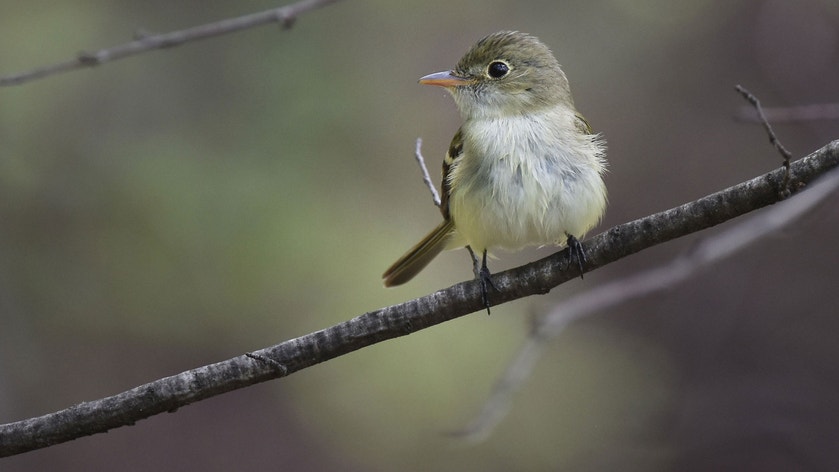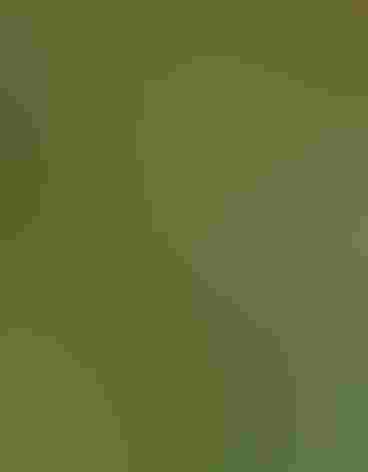Acadian Flycatcher
At a Glance
In southern woods in summer, the short explosive song of the Acadian Flycatcher comes from shady spots along streams or near swamps. This is the only member of the confusing Empidonax group to nest in most parts of the deep south. Its range extends north to the Great Lakes and southern New England, and it has been gradually expanding this range toward the north.
All bird guide text and rangemaps adapted from by Kenn Kaufman© 1996, used by permission of Houghton Mifflin Harcourt Publishing Company. All rights reserved.
Category
Perching Birds
IUCN Status
Least Concern
Habitat
Forests and Woodlands, Freshwater Wetlands
Region
Florida, Great Lakes, Mid Atlantic, New England, Plains, Southeast, Texas
Behavior
Flitter, Hovering
Population
5.200.000
Range & Identification
Migration & Range Maps
Unlike other Empidonax flycatchers, the Acadian regularly migrates north across the Gulf of Mexico in spring. Most migration is at night.
Description
6" (15 cm). Has contrasting wing-bars and eye-ring like other Empidonax flycatchers, but tends to look quite pale below, green above. Fall birds may be very yellow below; notice the bigger bill and longer wingtips than Yellow-bellied Flycatcher.
Size
About the size of a Robin, About the size of a Sparrow
Color
Brown, Gray, Green, White, Yellow
Wing Shape
Rounded
Tail Shape
Notched, Square-tipped
Songs and Calls
An emphatic 2-note flee-see or peet-seet! with the second syllable accented and higher pitched, uttered on the breeding grounds and occasionally on migration.
Call Pattern
Flat, Rising
Call Type
Chirp/Chip, Hi, Whistle
Habitat
Deciduous forests, ravines, swampy woods, beech groves. Breeds mostly in wet deciduous forest, such as in swamps or dense riverside woods; also in the understory of drier woods. Often nests in beech trees where they occur. Winters in the tropics in woodland or along its edges.
Sign up for ÃÛèÖAPP's newsletter to learn more about birds like the Acadian Flycatcher
Behavior
Eggs
3, sometimes 2-4. Creamy white, lightly spotted with brown. Incubation is by female, 13-15 days.
Young
Fed by both parents. Age of young at first flight about 13-15 days. Male may continue to feed fledglings from first nest while female begins incubating the second clutch of the season.
Feeding Behavior
Forages by watching from a perch, usually at mid levels within the forest, and then flying out to catch insects in the air. Also takes some food (such as caterpillars and spiders) from foliage or twigs while hovering.
Diet
Mostly insects. Feeds on a wide variety of insects, especially wasps, bees, ants, caterpillars, and beetles, also flies, moths, true bugs, and others. Also eats some spiders, millipedes, and some small fruits and berries.
Nesting
Courtship displays involve rapid aerial chases through the trees; male may hover above female when she stops to perch. Nest site is in tree or large shrub, usually deciduous, averaging 13' above ground, sometimes 4-50' up. Usually suspended within horizontal fork of branch well out from trunk. Nest (built by female) is a rather loosely made cup of weed stems, twigs, grass, and other plant fibers, sometimes lined with finer materials such as rootlets and plant down. Webs of spiders and caterpillars probably help to hold nest together. Usually has trailing strands of weeds or other materials hanging below, giving nest a sloppy or abandoned appearance.
Conservation
Conservation Status
Would be vulnerable to loss of habitat, but no significant decline noted so far. In some regions, Brown-headed Cowbirds often lay eggs in nests of this species.
Climate Threats Facing the Acadian Flycatcher
Choose a temperature scenario below to see which threats will affect this species as warming increases. The same ÃÛèÖAPP change-driven threats that put birds at risk will affect other wildlife and people, too.





